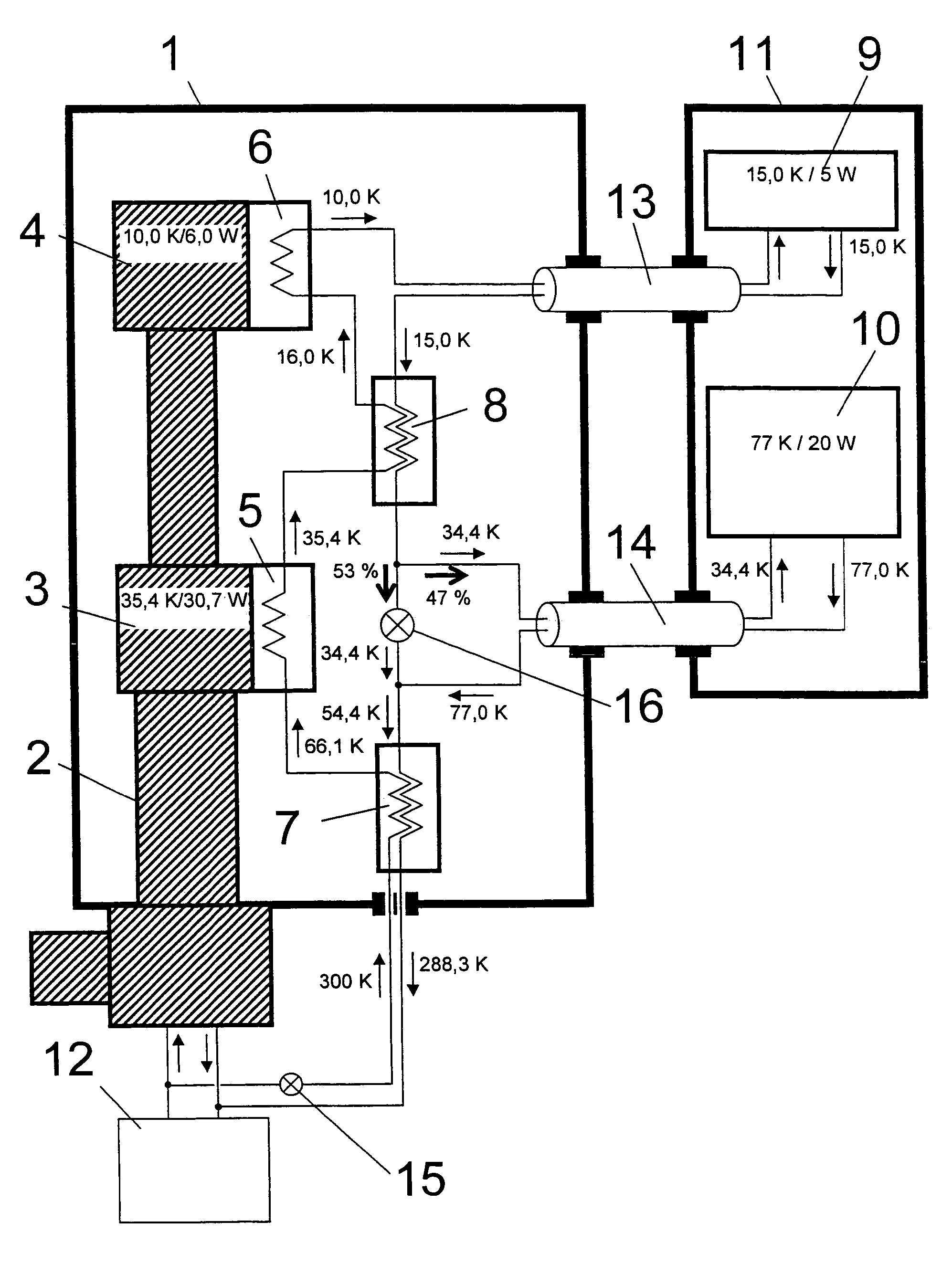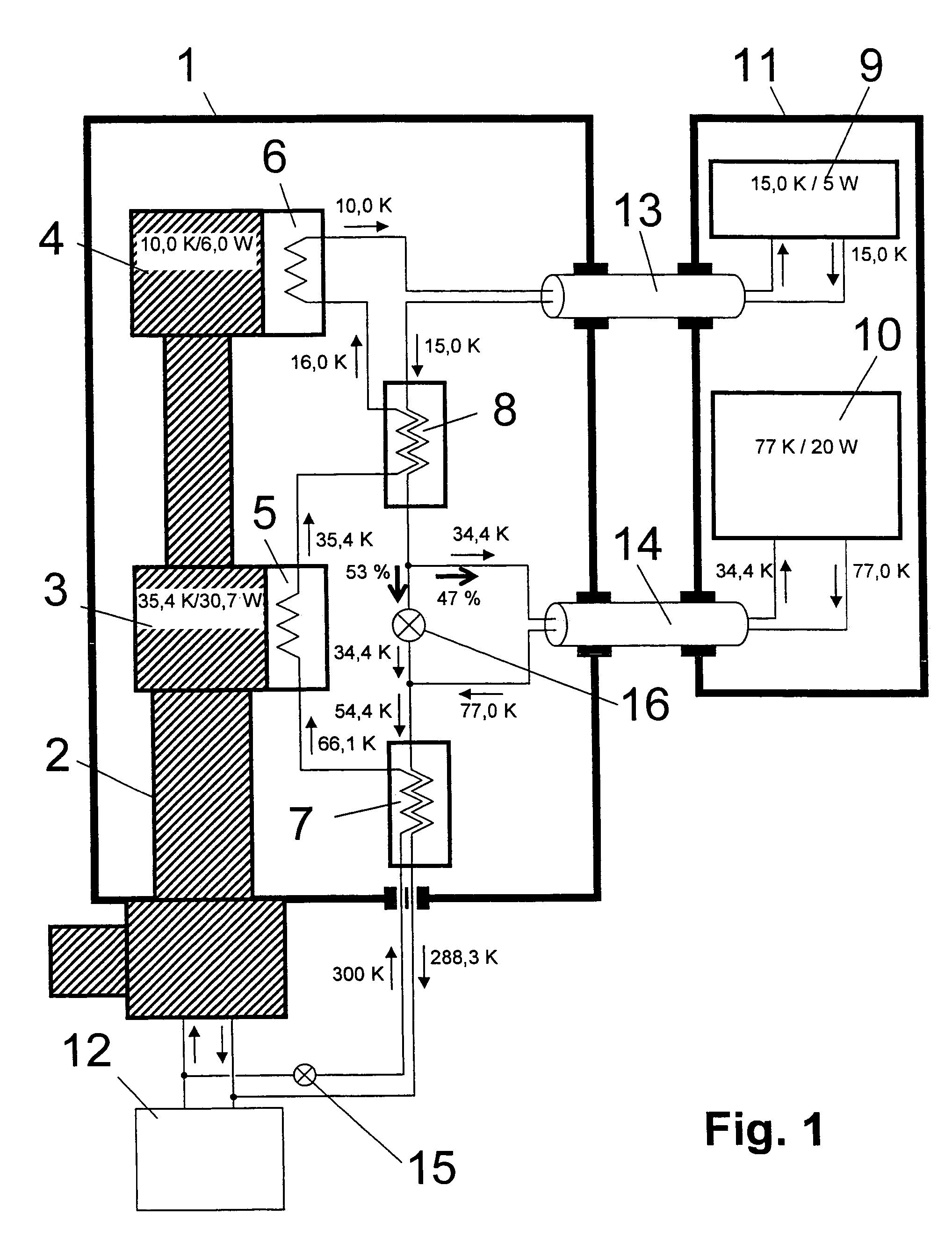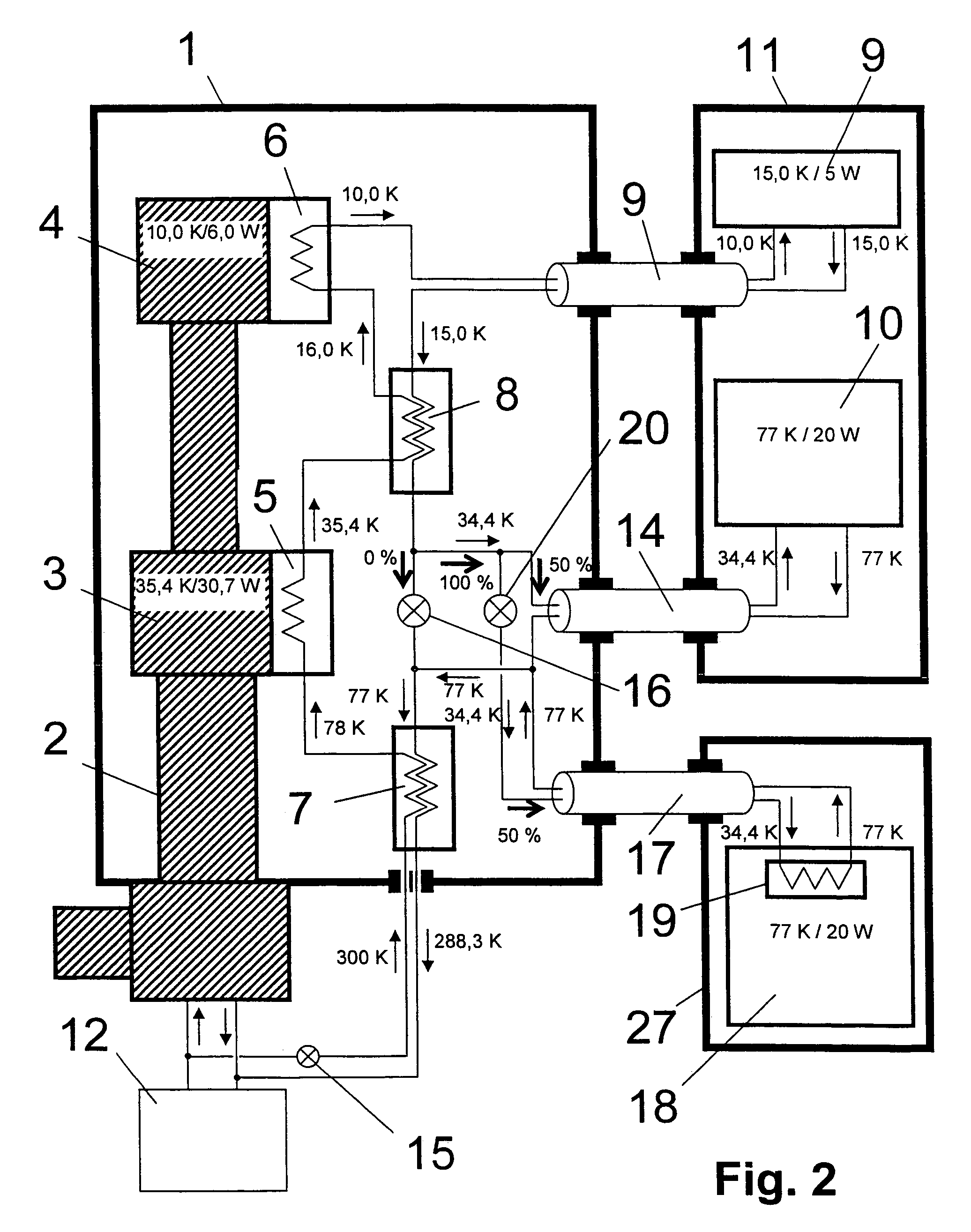NMR spectrometer with refrigerator cooling
a spectrometer and refrigerator technology, applied in the field of nmr spectrometers, can solve the problems of high cost, inability to solve only the object of reducing or completely compensating for ln/sub>loss, and high cost, so as to reduce temperature loss, reduce temperature difference, and reduce energy loss
- Summary
- Abstract
- Description
- Claims
- Application Information
AI Technical Summary
Benefits of technology
Problems solved by technology
Method used
Image
Examples
Embodiment Construction
[0036]FIG. 1 shows a conventional cooling device comprising an evacuated and thermally insulated housing 1 which houses a refrigerator 2 with a first cold stage 3 and a second cold stage 4 and stage exchangers 5, 6 as well as counter current heat exchangers 7, 8. The cooling device cools an RF resonator 9 and a pre-amplifier 10 which are both parts of an NMR probe head 11. A similar variant is described in U.S. Pat. No. 5,889,456 which differs, however, in that the helium gas of the closed gas circuit is not circulated with a separate circulating pump but with the helium compressor 12 of the refrigerator 2 (similar to the U.S. Pat. No. 5,508,613).
[0037]Helium gas, which flows in one or more closed circuits, is used to transport the cooling power. The housing 1 and the NMR probe head 11 are connected to each other via transfer lines 13, 14, thereby closing the helium gas cooling circuit for cooling the RF resonator 9 and pre-amplifier 10. The NMR probe head 11 and the two transfer li...
PUM
 Login to View More
Login to View More Abstract
Description
Claims
Application Information
 Login to View More
Login to View More - R&D
- Intellectual Property
- Life Sciences
- Materials
- Tech Scout
- Unparalleled Data Quality
- Higher Quality Content
- 60% Fewer Hallucinations
Browse by: Latest US Patents, China's latest patents, Technical Efficacy Thesaurus, Application Domain, Technology Topic, Popular Technical Reports.
© 2025 PatSnap. All rights reserved.Legal|Privacy policy|Modern Slavery Act Transparency Statement|Sitemap|About US| Contact US: help@patsnap.com



